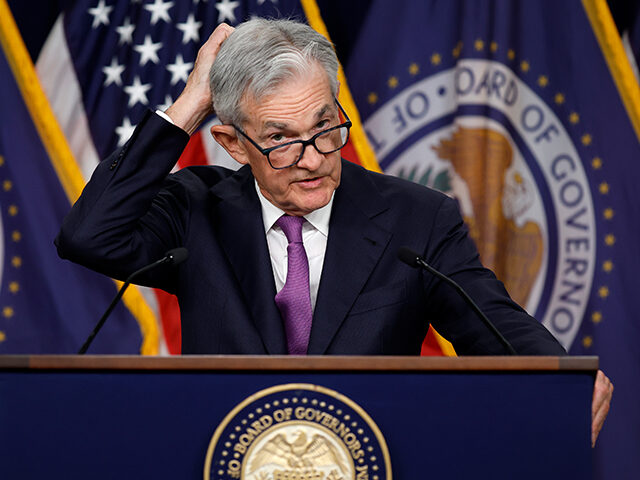Powell Says He Doesn’t Expect a Soft Landing, But the Projections Sure Look Cushy
The Federal Reserve appears to expect the softest of landings next year.
The new economic projections released by the Fed on Wednesday showed Fed officials now expect a lot more growth this year and in subsequent years but only modestly higher inflation. This is what market watchers like to describe as a “soft landing” or “immaculate disinflation.”
Yet Fed Chairman Jerome Powell insisted at his press conference on Wednesday that a soft landing is not his “base case” for the economy. It was a possibility, he said, but not the most likely outcome.
That view might not be widely shared by his fellow officials. Certainly, the summary of economic projections seem to indicate a pretty rosy set of expectations.
The median projection for real gross domestic product growth for this year was raised to 2.1 percent from the June projection of just one percent. The projection for next year’s economic growth is now 1.5 percent, up from 1.1 percent, and they held on to the 1.8 percent projection for 2025 and the longer run.
The Long Road to a More Resilient Economy
It’s worth taking a moment to reflect how far the Fed’s GDP projections have traveled over the course of this year. At the December 2022 meeting, the Fed saw full-year growth coming in at 0.5 percent. That was more or less a forecast for a recession this year. At the March meeting, the median forecast came down to 0.4 percent.
When the forecast was raised to one percent in June, the Fed was playing catch up. The economy had grown at a two percent pace in the first quarter of the year, consumer spending was still very strong, and unemployment had stayed ultra low. Even still, Fed officials took a pretty negative view of our economic prospects, lowering the median forecast for 2024 to 1.1 percent from 1.2 in March. This implied that any extra growth this year was being pulled forward from next year.
That’s not the case this time. The median projection for next year’s growth actually rose to 1.5 percent, up from 1.1 percent. So instead of more growth today implying less growth tomorrow, more growth today now is creating momentum for more growth tomorrow.
Powell has stated many times that he believes the economy will have to grow “below trend” for some time in order for inflation to return to the Fed’s two percent target. The projections on Wednesday, however, show only one year of below-trend growth. By 2025, the economy is expected to be growing at the 1.8 percent rate the Fed sees as the long-term trend.
The expectations for the labor market are also quite a bit more “soft landing” than they had been. The median projection for unemployment at the end of this year is now 3.8 percent, down from 4.1 percent at the June meeting and 4.5 percent at the March meeting. Next year’s projected unemployment rate is 4.1 percent, down from 4.5 percent in June. And they did the same with 2025’s forecast, bringing it down to 4.1 percent from 4.5 percent. That is barely above the four percent rate the Fed sees as normal for the economy.
Yet Inflation Is Still Expected to Fade
With all this added growth, you might expect that the Fed officials would be increasing the rate of inflation they see coming. But the inflation projections have barely budged—and in one case, they actually came down. The median forecast for personal consumption expenditures growth ticked up to 3.3 percent, was left unchanged at 2.5 percent next year, and increased slightly to 2.2 percent from 2.1 percent for 2025.
The forecast for core PCE inflation for this year actually came down to 3.7 percent from 3.9 percent. The 2024 estimate is still 2.6 percent, where it has been all year. The 2025 forecast was increased a tick to 2.3 percent from 2.2 percent.
Perhaps the most significant change is to next year’s median projection for the federal funds rate. This had been 4.6 percent at the last meeting and 4.3 percent in March. Now Fed officials see their target rate at 5.1 percent at the end of 2024. Similarly, the forecast for the 2025 rate target jumped up to 3.9 percent from 3.4 percent. The clear message to markets is that the Fed is not going to be cutting as much as had been priced in.
The Fed is very likely to raise its interest rate target at its Halloween meeting (October 31 through November 1). But Fed officials then think they will not have to raise again and expect the next move will be a cut. Given the volatility of the Fed’s own projections, however, we would not be surprised if there are more hikes required to bring inflation down to two percent.

COMMENTS
Please let us know if you're having issues with commenting.